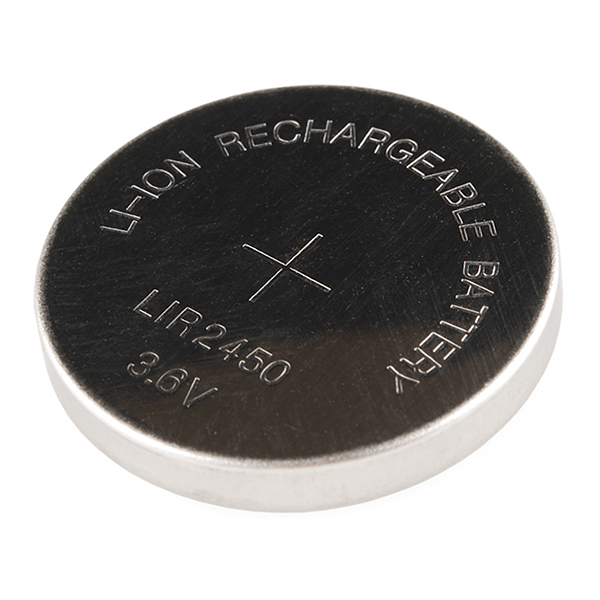Button batteries, also known as coin cell batteries, are integral components that power a wide array of consumer electronics today. From wristwatches to remote controls and hearing aids, these small yet powerful batteries play a crucial role in modern life. Understanding the science behind button batteries helps us appreciate their function and informs us about their safe usage, especially given the potential hazards associated with improper handling. This article will explore how button battery work, the different types available, their chemistry, and their applications.
What Are Button Batteries?
Definition and Features
Button batteries are small, round batteries that look like a coin. They range in size from about 5 mm to 30 mm in diameter and vary in thickness. Their compact shape allows them to fit snugly into devices that require a low-profile power source. Furthermore, the design enables them to be lightweight, making them an ideal choice for portable electronics where space and weight constraints are crucial.
The primary benefit of using button battery is their ability to deliver stable voltage over an extended period, providing reliable power to low-drain devices. They are typically composed of a metal casing, a separator, an electrolyte, and the active materials that generate electrical energy through chemical reactions. With a wide variety of chemistries available, button battery can cater to numerous applications.
Importance in Modern Electronics
Button batteries have become essential in many electronic devices, and their popularity stems from their versatility. These batteries are often used to power devices that require minimal power consumption, including clocks, toys, cameras, and medical devices such as glucose meters and hearing aids. Their ability to maintain consistent voltage levels makes them particularly suited for devices that rely on precision and reliability.
In recent years, button batteries have also found applications in more advanced technology, such as fitness trackers and smart toys. Their small size allows engineers to design thinner products without sacrificing power, resulting in sleek and modern devices that meet consumer demands.

How Button Batteries Work
Basic Operating Principle
The operation of a button battery relies on electrochemical reactions that convert stored chemical energy into electrical energy. At the core of this process are the battery’s anode (negative terminal) and cathode (positive terminal). The anode typically consists of metal or metal compounds, while the cathode is often made from materials like manganese dioxide or silver oxide, depending on the battery type.
When the battery is connected to a device, a chemical reaction occurs at the electrodes. At the anode, oxidation takes place, freeing electrons, while at the cathode, a reduction reaction occurs, allowing the electrons to flow back to the battery, completing the circuit. The movement of electrons produces electric current, which powers the connected device.
Chemical Reactions at Work
Button batteries utilize different chemicals in their construction, which contributes to their unique properties and performance capabilities. The reaction happening inside the battery can vary based on the battery chemistry:
- Alkaline Batteries: These use a zinc anode and manganese dioxide as the cathode. The chemical reaction in alkaline batteries involves zinc oxidation and manganese reduction.
- Silver Oxide Batteries: These batteries feature a silver oxide cathode and a zinc anode. They offer higher energy density and stable voltage levels, making them ideal for high-performance devices.
- Lithium Batteries: Lithium button batteries rely on lithium metal for the anode and compounds like manganese or cobalt for the cathode. They can provide high energy density and long shelf life, making them suitable for devices that need reliable performance over extended periods.
Understanding these reactions is crucial, as they determine how long a battery can last in a device and how much energy it can store.

Types of Button Batteries
Common Variants
Button batteries come in various types, each serving different purposes based on their chemical composition and design. Some of the most commonly used types include:
- CR (Lithium) Batteries: These are prevalent in watches and calculators. Their long lifespan and high energy density make them a popular choice for low-drain applications.
- LR (Alkaline) Batteries: Often found in toys and remote controls, these batteries are effective for devices that require moderate power levels.
- SR (Silver Oxide) Batteries: These batteries are favored in devices like watches due to their stable voltage and moderate discharge characteristics. They provide a consistent output and high-performance levels.
- BR (Lithium) Batteries: Used mainly in applications requiring lower temperatures and better performance in cold conditions, these batteries are found in various medical devices.
Each of these button battery types has unique advantages and applications, making it essential to choose the right variant for a specific device.
Battery Design and Standardization
Button batteries also follow standard sizing and design conventions, making it easier for consumers to identify compatible replacements. Common standards include the CR2032, CR2025, and CR2016 batteries, typically denoting dimensions in millimeters. The first two digits represent the battery’s diameter, while the last two digits specify its thickness. This standardization ensures that users can find appropriate replacements for devices quickly without needing to navigate many design variations.

Safety Considerations
Risks of Button Battery Ingestion
While button batteries are highly effective in powering devices, they pose significant safety risks if ingested, particularly for children. When swallowed, these batteries can become lodged in the esophagus, leading to severe internal injuries and chemical burns. The dangers associated with ingestion have prompted health organizations to issue guidelines for the safe storage and usage of button batteries. Understanding these risks is vital for every household where children may have access to toys or devices powered by button batteries.
Preventative Measures
To mitigate the risk of accidental ingestion, parents and caregivers should implement several safety precautions. Store devices that use button batteries out of reach of young children, ensuring that any spare batteries are kept in locked or child-proof containers. Additionally, educate family members about the dangers associated with button batteries, emphasizing the importance of supervision during playtime.
Furthermore, always inspect toys and devices for secure battery compartments. If a battery compartment is easily accessible, consider replacing the item or using it only under adult supervision. Regularly educate children about the dangers of swallowing batteries, highlighting that they are not toys and should never be placed in their mouths.

Environmental Impact
Recycling Button Batteries
The rising use of button batteries brings to light concerns over their environmental impact, especially when disposed of improperly. Many button batteries contain heavy metals and other toxic materials that can leach into the environment and cause pollution. Therefore, it is crucial to recycle button batteries properly. Most communities offer recycling programs specifically for batteries, allowing you to dispose of them safely. Check with local recycling centers or waste management facilities for guidance on disposal options.
Seeking Sustainable Alternatives
In addition to recycling, efforts are underway to develop more sustainable battery technologies. Researchers are exploring alternative materials that reduce the environmental impact of battery production and disposal. Innovations in battery chemistry may lead to safer and more eco-friendly options, providing renewable power sources that minimize waste. As consumers, we can also support such initiatives by choosing products that prioritize sustainability and by advocating for responsible practices in the industries that manufacture these components.
Everyday Applications
Common Uses in Electronics
Button batteries’ compact design makes them perfect for a variety of everyday applications. They power numerous devices that people rely on regularly. For example, wristwatches utilize button batteries to maintain precise timekeeping standards, allowing individuals to rely on their timepieces through various conditions. Remote controls also use these batteries, providing functionality for televisions, sound systems, and several other electronic devices found within the home.
In addition, many electronic health devices, such as glucose monitors and hearing aids, leverage the reliability of button batteries. These applications highlight the necessity for consistent, reliable power sources to support critical daily tasks.
The Future of Button Batteries
As technology advances, the potential applications of button batteries continue to expand. We can expect to find them driving innovations in wearable technology, smart home devices, and even automotive applications. The ongoing research into improving battery performance and longevity may help create new uses in electronic devices we have yet to imagine. Staying updated with these advancements is essential as technological integration becomes increasingly prevalent in our everyday lives.

Conclusion
In conclusion, button batteries are essential components in the electronic devices we frequently use. Understanding the science behind how they work, the chemistry involved, and their everyday applications enhances our appreciation for these small yet powerful power sources. As we continue to rely on technology in our daily lives, it becomes increasingly important to be aware of the safety risks and environmental implications associated with button batteries.
By adopting responsible practices for using and disposing of button battery, we can enjoy their advantages while ensuring safety for ourselves and our children. We must advocate for sustainable alternatives to reduce the environmental impact of battery waste, paving the way for future innovations in battery technology. Through knowledge, awareness, and responsibility, we can harness the capabilities of button batteries while minimizing potential hazards.
